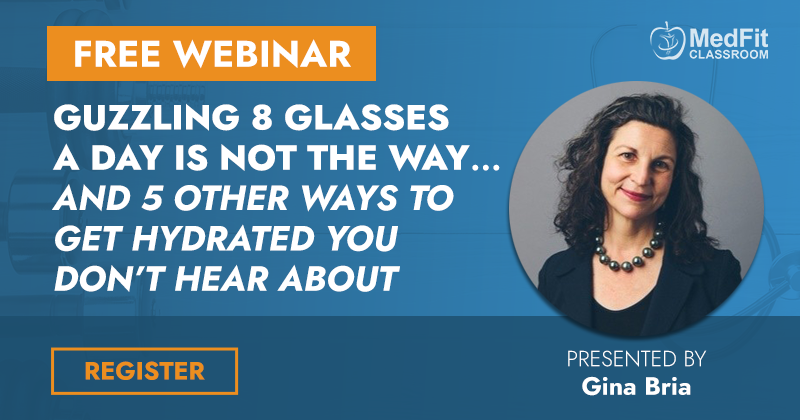Water is not just blue, it’s green! Eat Nature’s Water.
We think of water as being blue liquid, functional, moistening, and wet, but not nutritious. Original government guidelines on hydration were based on total ounces, and here is the surprise… 45% of those ounces came from food. Over the years, urban legend morphed it into ounces from liquid and finally from water only. But getting hydration from water AND food is the absolute smartest strategy on the planet, one designed by nature.
Water from fresh food can be up to 2/3 more hydrating than water from a glass.
The gel water in fruits and vegetables is structured by nature, more nutritious, and guess what, more hydrating than liquids because it is packed with fibers to help water absorb not just flash flood through, and also full of nutrients.
Ranging between 80 to 98% gel water by volume, plants are nature’s perfect biological packaging of nutrients and hydration. The next time you eat a fruit or a vegetable, it is a form of water. Water-rich foods are nutrient-rich, packed with antioxidants, proteins with their amino acids, and vitamins. They also carry minerals like calcium, magnesium, potassium, and sodium, which when activated by the electrical charge in water are then known as electrolytes that we need for energy.. We need this fuel not only for biological nutrition but also for cognition, judgment, and mood. And get this, because of the fiber in plants, the water stays in our system longer because we absorb it more slowly. It’s a triple play of hydrating health: pure nature’s water, absorbent fiber, and not only needed nutrients but electrolytes!

Top 12 Hydrating Fruits (% H3O2)
- Starfruit – 91.4%
- Watermelon – 91.4%
- Strawberries – 91%
- Grapefruit – 90.5%
- Cantaloupe – 90.2%
- Pineapple – 87%
- Raspberries – 87%
- Blueberries – 85%
- Kiwi – 84.2%
- Apples 84%
- Pears – 84%
- Grapes – 81.5%

Top 12 Hydrating Veggies (% H3O2)
- Cucumbers – 96.7%
- Romaine Lettuce – 95.6%
- Celery – 95.4%
- Radishes – 95.3%
- Zucchini – 95%
- Tomatoes – 94.5%
- Peppers – 93.9%
- Cauliflower – 92.1%
- Spinach – 91.4%
- Broccoli – 90.7%
- Carrots – 90%
- Sprouts – 86.5%
The Benefits of Fresh Juices and Smoothies
Besides eating lots of fruits and veggies, fresh juices and smoothies are easy to make and are highly hydrating. While fresh juices with their gel water is still more nutritious and hydrating than a glass of water, they can be expensive to make and juicing filters out the pulp and discards it.
This is why we recommend smoothies as the path to optimal hydration. Smoothies blend in the whole fruit or vegetable, retaining the plant fibers. In addition to helping us stay hydrated longer, these precious plant fibers, or cellulose, also sweep clean micro-sized toxins, cellular waste, and debris that are constantly coming into our bodies from our industrial environments. Plant compounds can even buffer us from electromagnetic assaults, which create mineral imbalances. With smoothies, there is no tossing out the pulp!
In Hydration Foundation’s Recipe Section, we have created recipes and tips for making smoothies and other drinks.
Salt is a Hydrating Solution
Yes, salt can help you stay hydrated. Natural (unrefined) and processed salts are not the same. Unlike processed salts, natural salts contain sodium, potassium, and many other trace minerals. Sodium provides positively charged ions while potassium provides negatively charged ions. This combination generates electrical charges in our cell membranes and keeps cells functioning. If you don’t have enough salt in your system, your body’s internal charge is not balanced and cells can’t receive and transmit impulses the way they should. To learn more about salt and its critical role in hydration, click here. A small amount of natural salt is absolutely essential for hydration.
Free Webinar!
Join Hydration Foundation founder Gina Bria for a free webinar on this topic, Guzzling 8 Glasses a Day Is Not the Way… and 5 Other Ways to Get Hydrated You Don’t Hear About
Originally printed on the Hydration Foundation. Reprinted with permission
As founder of The Hydration Foundation, anthropologist Gina Bria spreads the science of how plants transform liquid water into gel water, or H3O2. She shares how we can adapt and use these ideas now in our water-challenged world for better hydration and better water protection worldwide. As a thought leader on the topics of hydration, energy, and water purity, she has shared the TEDx stage with leading water researchers, Dr. Gerald Pollack of the Pollack Water Lab, Dr. Stephanie Seneff of MIT, and Algonquin Grandmother Elder, Nan Andry. She has presented her work in rejuvenation and longevity at worksites in industries as diverse as IT companies, museums, sports conventions, schools, hospitals, and health and wellness gatherings. Her forthcoming book, “QUENCH: Reclaim your Energy and Health with the New Science of Hydration, including A Five Day Plan to Get You Hydrated”, is co-authored with Dr. Dana Cohen, MD, an innovative integrated physician in New York City.

